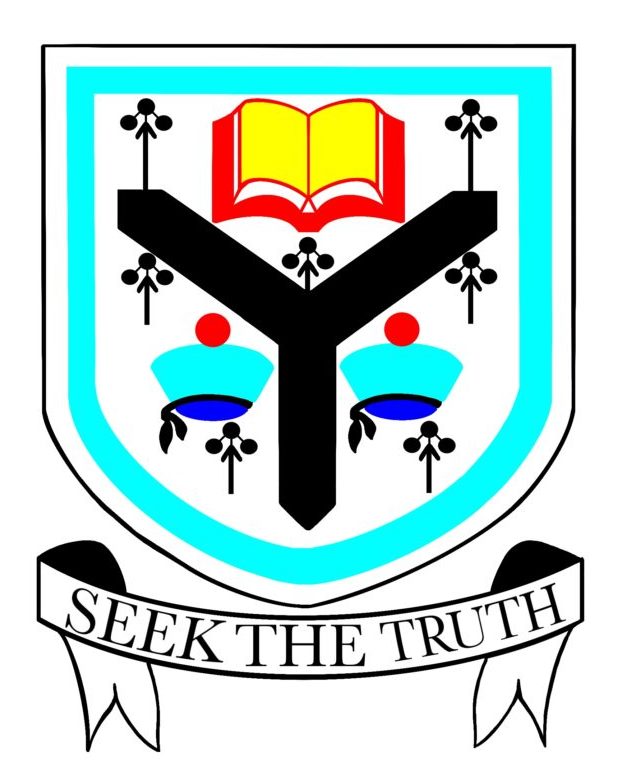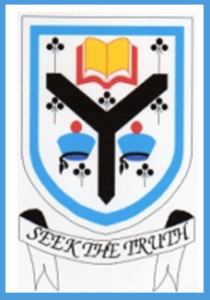
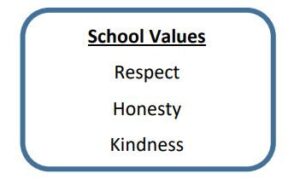
Anti-bullying Policy
RATIONALE
Bullying behaviour impacts on young people’s wellbeing and can affect their participation, attainment and inclusion. Lainshaw Primary has a positive ethos and there is no place for bullying in our school community.
This policy includes a commitment to addressing bullying and addressing it quickly.
Bullying should never be seen as a typical part of growing up.
Central to this are our School Values of:
- Respect
- Honesty
- Kindness
Our Vision is that:
- Every pupil will grow up free from bullying and will develop respectful, responsible and confident relationships with other children, young people and adults.
- Pupils and their parents/carers, will have the skills and resilience to prevent and/or respond to bullying appropriately.
- Every pupil who requires help will know who can help them and what support is available.
- Adults working with children and young people will follow a consistent and coherent approach in dealing with and preventing bullying.
What do we mean by bullying?
Bullying is both behaviour and impact; the impact is on a person’s capacity to feel in control of themselves. Bullying takes place in the context of relationships; it is behaviour that can make people feel hurt, threatened, frightened and left out. This behaviour happens face to face and online.
This behaviour can harm people physically or emotionally and, although the actual behaviour may not be repeated, the threat may be sustained over time, typically by actions, looks, messages, confrontations, physical interventions, or the fear of these.
This behaviour can include:
- Being called names, teased, put down or threatened face to face/online.
- Being hit, tripped, pushed or kicked.
- Having belongings taken or damaged.
- Being ignored, left out or having rumours spread about you (face-to-face and/or online).
- Sending abusive messages, pictures or images on social media, online gaming platforms or phone.
We address online bullying as part of our whole anti-bullying approach, not as a separate area of work or policy.
- Behaviour which makes people feel like they are not in control of themselves or their lives (face-to-face and/or online).
- Being targeted because of who you are or who you are perceived to be (face to face and/or online).
- Prejudice-based bullying that relates to perceived or actual differences. This can lead to behaviour and language that could manifest into racism, sexism, homophobia, prejudice and discrimination towards disability or faith.
When is it not bullying behaviour?
At Lainshaw Primary we discuss with young people how they feel to help them to develop resilience to manage their relationships. We use the PATHS programme to deliver this. We know that young people will fall out and disagree with each other as they form and build relationships. This is a normal part of growing up and most young people have the ability to bounce back from this type of behaviour. At Lainshaw Primary we focus on early intervention, prevention and focus on ensuring we get it right for all of our young people.
Responding to attempted bullying behaviour
Sometimes, attempts to bully can have no obvious or immediate effect. A person can attempt to bully someone using a range of behaviours but it may have no impact – in this case the person has not been bullied but the behaviour needs challenged and recorded appropriately and is not ignored.
For example, the use of any derogatory language, which may have no impact on the person it is aimed at, must still be challenged as the language itself is unacceptable and could impact on other people.
Some behaviour can be perceived as or assumed to be bullying. However, certain incidents can often be more serious and, in fact, criminal in nature. Understanding the individual circumstances is important to ensure that there is a clear distinction between bullying and criminal offences. This will always be dealt with in partnership with our Campus Police Officer.
Bullying or Criminal Behaviour?
Some online behaviour may be illegal and young people are made aware of the far-reaching consequences of posting inappropriate or harmful content online via Health and Wellbeing and Campus Police Officer inputs. Online awareness and education is part of our Health and Wellbeing programme.
Bullying is a breach of the UN Convention on the Rights of the Child
Article 29 of the United Nations Convention on the Rights of the Child states that children’s education should develop each child’s personality, talents and abilities to the full. It should encourage children to respect others’ human rights as well as their own and other cultures. It should also help them to live peacefully and respect other people.
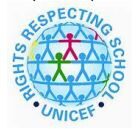
Preventing Bullying
In Lainshaw Primary we aim to set a positive ethos whereby all members of the school’s community take responsibility for reporting and challenging bullying. We aim to create a culture which encourages respect and values different opinions; one in which bullying will not be tolerated. All members of our school community are expected to model respectful behaviour and build positive relationships.
Therefore, a number of strategies are in place to help prevent bullying:
- A comprehensive programme integrated into Personal and Social Education to raise awareness of bullying behaviour and its consequences.
- Information and advice to pupils, parents, carers and staff regarding the school’s anti-bullying policy and strategies.
- Early identification and intervention when problems arise.
- Parental Involvement.
- Opportunities for pupils and staff to notify SMT of any concerns.
- Recognising and Realising Children’s Rights via our Rights Respecting School Group.
- Restorative Approaches.
- Inclusive and supportive learning environments.
- Solution Oriented Approaches.
- Nurturing Approaches.
- Ensure all children and young people are included, engaged and involved and have the opportunity to participate in school and community events.
Reporting Bullying
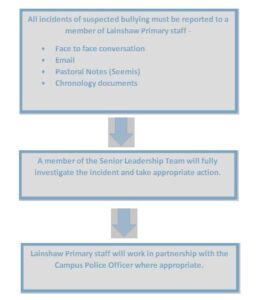 Responding to Bullying
Responding to Bullying
Each bullying incident is reviewed individually and a number of different practices may be adopted before finding one that is effective.
Any bullying behaviour must be challenged, however, all people (including those causing bullying) should always be treated with respect. This does not diminish the seriousness nor impact of bullying behaviour; rather, it is an essential way of maintaining the adult’s focus and response on the behaviour that is problematic.
This is a solution-oriented approach that is designed to help people change the way they behave without being stigmatised.
Therefore when responding to incidents or accusations of bullying the approach is to ask:
- What was the behaviour?
- What impact did it have?
- What does the child or young person want to happen?
- What do I need to do about it?
- What attitudes, prejudices or other factors have influenced the behaviour?
Children and young people who are exhibiting bullying behaviour will need help and support to:
- Identify the feelings that cause them to act this way
- Develop alternative ways of responding to these feelings
- Understand the impact of their behaviour on other people
- Repair relationships
At Lainshaw Primary we work in partnership with parents/carers and will contact home if an incident of bullying has been reported to us. Parents/Carers can be invited into school to explore different approaches to dealing with the situation and are advised that we may try different practices before finding one that is effective.
At Lainshaw Primary we work in partnership with our Campus Police Officer in some incidents of bullying.
In some situations there may be a need for a multi-agency Team around the Child meeting to ensure that the right people at the right time are involved in supporting.
Parents and pupils are always given advice about who to contact outside of school hours for support.
Parentline Police Scotland 101
Recording Incidents
Incidents will be recorded in SEEMIS ‘Bullying and Equalities’ module by the Senior Leadership Team. The incidents are regularly monitored to identify trends so that forward planning for PSE, parental involvement sessions and 3rd sector partnership working can be targeted around areas of need.
Recording will include information on:
- The children and young people involved, as well as staff or other adults.
- Where and when bullying has taken place.
- The type of bullying experienced, e.g. name calling, rumours, threats etc.
- Any underlying prejudice including details of any protected characteristic(s).
- Consideration of personal or additional support needs and wellbeing concerns and
actions taken including resolution at an individual or organisational level.
- Formal monitoring and evaluating of bullying incidents will take place annually and will be the responsibility of the Head Teacher and Senior Leadership Team.
The following will be used to assess the impact and effectiveness of the anti-bullying policy:
- Number of bullying incidents recorded.
- Number of concerns reported by pupils.
- Sample pupil surveys.
- Follow-up discussions with pupils involved in bullying.
Review
The anti-bullying policy will be reviewed every two years in consultation with staff and pupils.
This policy is in line with East Ayrshire Council’s Respectful Relationships Policy.
Anti-bullying resources:
#respectme – A learning resource that examines how developing respectful relationships can prevent bullying
Responding to bullying – What are my options?
Bullying – A guide for parents and carers
Anti-bullying Policy through to practice – Getting it right
Show Racism the Red Card
Appendix 1
Glow Guidance

Be Secure
- Always keep your Glow password to yourself.
- Always sign out of Glow when no longer using it.
Be Polite
- Always treat others with respect.
- Never post or share a message, document, image, video or any other content that is inappropriate or likely to cause harm or offence to others.
Be Safe
- Always remember to be careful when communicating over the internet – other users may not be who they seem.
- Don’t share your personal details with other people.
- Never agree to meet someone in person who you have only met on the internet unless accompanied by a parent, carer or other known and trusted adult.
- Speak to an adult immediately if you see a message, image or anything else on the internet that concerns you.
Be Legal
- Never post or share a message, document, image, video or any other content that you do not have permission to use.
Be Responsible
- Always be mindful that once you put something online, that information may be beyond your control.
- Never post or share a message, document, image, video or any other content online that you would not wish other learners, teachers, or parents to see.
- Remember that anything you do can be traced back to you.
- If you misuse Glow, this can be reported to your school. If you spot something that doesn’t follow these Rules Please report it.
NOTICE: All access, use and content on this network is monitored by Glow to manage performance, security, and compliance with Glow Community Rules.
Appendix 2
This section outlines the protected characteristics in the Equality Act 2010 as well as other characteristics which may lead to bullying that are not covered by the Equality Act 2010.
Additional Support Needs:
These can arise for any reason and be of short or long-term duration. Additional support may be required to overcome needs arising from learning environment; health or disability; family circumstances or social and emotional factors, and therefore may relate to a protected characteristic. A child or young person may be bullied because they have an additional support need and crucially being bullied can also lead to an additional support need.
Age:
Age is a protected characteristic although prejudice and discrimination based on age is not applicable in school settings, it can affect children and young people in a variety of other settings.
For example, in workplaces, further and higher education and in wider society.
Asylum Seekers and Refugees:
Children and young people who are asylum seekers or refugees may be at greater risk of bullying directly and indirectly. Some bullying behaviour against these groups may be of a racist nature which, given that race is a protected characteristic, can contravene equality legislation and have hate crime implications. Stigma, due to lack of knowledge and, given that race is a protected characteristic, understanding of asylum seekers and refugees, and reluctance to burden parents with extra worries can allow bullying to go undetected and continue.
Body Image and Physical Appearance:
This can be hugely important to children and young people with bullying because of body image having the potential to negatively impact on their wellbeing. In some cases, body image and physical appearance may relate to a protected characteristic, such as race or disability.
Disability:
Disability is a Protected Characteristic. People who bully others may see disabled children and young people as being less able to defend themselves and less able to tell an adult about the bullying. The language and behaviour used may be a result of a lack of understanding about the nature of a person’s disability. Increased knowledge and understanding about disability and the impact it can have can help reduce bullying.
Gender Identity and Transphobic Bullying:
The term ‘transgender’ is an umbrella term for those whose gender identity or expression differs in some way from the sex that was assigned to them at birth. Gender identity reflects an individual’s internal sense of self as being male, female, neither or aspects of both. Gender reassignment is a protected characteristic. Transgender people face significant societal prejudice largely because they are perceived as not conforming to gender stereotypes, expectations and norms. As a result, transgender children and young people can be particularly vulnerable to bullying. This can manifest in many ways including transphobic name calling or deliberately misgendering them. An individual may also experience transphobic bullying if someone is perceived to be transgender or someone they are associate with, is transgender, i.e. a parent, relative or other significant figure. The term ‘gender reassignment’ is a protected characteristic within the Equality Act 2010 and refers to those who propose to go through, are going through, or have gone through a process of gender re-assignment.
Gypsy/Travellers:
Children and young people who are Gypsy/Travellers may be at greater risk of bullying directly and indirectly. Some bullying behaviour against these groups may be of a racist nature which, given that race is a protected characteristic, can contravene equality legislation and have hate crime implications. Perceived risks about bullying and given that race is a protected characteristic parents’ own experiences of discriminatory behaviour may lead to low levels of enrolment and poor attendance for Gypsy/Traveller children and young people as well as early exit from formal education. Other Traveller families, such as Roma, may have similar concerns.
Sexual Orientation and Homophobic Bullying:
Sexual orientation is a protected characteristic within the Equality Act 2010. Bullying based on sexual orientation is largely motivated by prejudice towards lesbian, gay or bisexual people. Homophobic bullying is when a young person’s actual or perceived sexual orientation is used to exclude, threaten, hurt, or humiliate them. Any young person can be homophobically bullied, whether they are LGBT or not. Sometimes young people can be homophobically bullied because others think that they are LGBT, because they have LGBT family or friends or often because they are seen as different or not conforming to traditional gender stereotypes. Transgender children and young people can therefore also experience homophobic bullying. Homophobic language and jokes around the school can create a climate of homophobia; for example, the use of the word ‘gay’ to mean sub-standard or uncool. This type of language should therefore be addressed.
Intersectionality:
Understanding the different and unequal social and economic outcomes for particular groups, based on intersections between race, ethnicity, class, gender, sexual orientation, disability, and age. In the context of anti-bullying, it is important to understand the connection between the experience of belonging to one or more of these groups and a resultant inequality in attainment and wellbeing.
Looked After Children and Young People:
Looked after children and young people can be particularly vulnerable to bullying. Children can face bullying behaviour simply because they are looked after and seen in some way as ‘different’.
Children who are looked after away from home can also experience bullying behaviour in their residential care home, at school and in their community. Looked after children and young people may not always have a stable support network to turn to when experiencing bullying. For some children forming positive relationships with peers and adults can be more difficult due to their early childhood adversity. Developing trusting and supportive relationships between children and practitioners is required to address bullying of all forms and in all settings.
Marriage/Civil Partnership:
Marriage and civil partnership is a protected characteristic. Whilst it is unlikely that a school-aged pupil will be in a same sex marriage or civil partnership and directly experience prejudice and discrimination as a result, there could be instances of indirect discrimination, for example, if the child or young person is associated with someone (parent, sibling, etc.) who is in a same sex marriage or civil partnership or in a same sex relationship. Marriage and civil partnership discrimination and prejudice can also affect children and young people in a variety of other settings, for example, in workplaces, further and higher education and in wider society.
Racism and Race:
Race is a protected characteristic. Children and young people from minority ethnic groups often experience bullying based on perceived differences in dress, communication, appearance, beliefs and/or culture as well as their skin colour and accent. The status of the ethnic group a child belongs to (or people assume they belong to) in a school, community or organisation can often lead to a child or young person experiencing bullying behaviour. This can arise from a misguided and/or learned belief that they are less valued and ‘deserve’ to be treated differently, or with less respect.
Religion or Belief:
Religion or belief is a protected characteristic. Lack of knowledge and understanding about the traditions, beliefs and etiquette of different faiths can lead to religious intolerance. Lack of awareness about the differences in practices of religions such as prayer times, dietary requirements, fasting and the wearing of religious clothing or articles of faith can result in misunderstandings and stereotyping, which may lead to bullying. People who have a religion or belief as well as those who do not, are protected under the Equality Act 2010.
Sectarianism:
Most people understandably associate sectarianism with religion, which is a protected characteristic. The reality of prejudice however means that your family background, the football team you support, the community you live in, the school you attend and even the colour of your clothing can mark you out for sectarian abuse – whatever your beliefs may be. In Scotland, sectarianism is most often related to Protestant and Roman Catholic divisions within Christianity but can also relate to other religions, for example Sunni and Shia Muslims within Islam, and Orthodox and Reform Jews within Judaism.
Sexism and Gender:
Sex, sexual orientation and gender reassignment are all protected characteristics. Bullying in the form of derogatory language and the spreading of malicious rumours can be used to regulate both girls’ and boys’ behaviour – suggesting that they are not being a real man or a real woman. These terms can be of an explicit sexual nature and it is worth noting that many can involve using terms for people who are gay and lesbian as a negative towards a person’s masculinity or femininity.
Sexism and gender stereotypes feed into homophobia, biphobia and transphobia. Gender stereotyping, based on the notion of acceptable and unacceptable male and female behaviour, can leave children and young people who are perceived not to conform to these notions vulnerable to indirect and direct bullying. Personality traits that do not fit into the unwritten rules of ‘appropriate’ male and female behaviour can lead to bullying because of the prejudice towards their perceived difference.
Socio-economic Prejudice:
Bullying due to socio-economic status can take place in any community. Small differences in perceived family income/family living arrangements/ social circumstances or values can be used as a basis for bullying behaviours. These behaviours, such as mocking speech patterns, accents, belongings, clothing, etc can become widespread through those considering themselves to be in the dominant socioeconomic group. Bullying of children who endure parental substance misuse can also be prevalent.
Young Carers:
The lives of young carers can be significantly affected by their responsibility to care for a family member who has a physical illness or disability, mental health problem, sensory or learning disability or issues with the misuse of drugs or alcohol. Young carers are at risk of bullying for a variety of reasons. Depending on responsibilities at home, they may find themselves being unable to fully participate in school or after-school activities or ‘fun stuff’. This can make it difficult for them to form relationships; it can hinder successful transitions or lead to educational difficulties.
